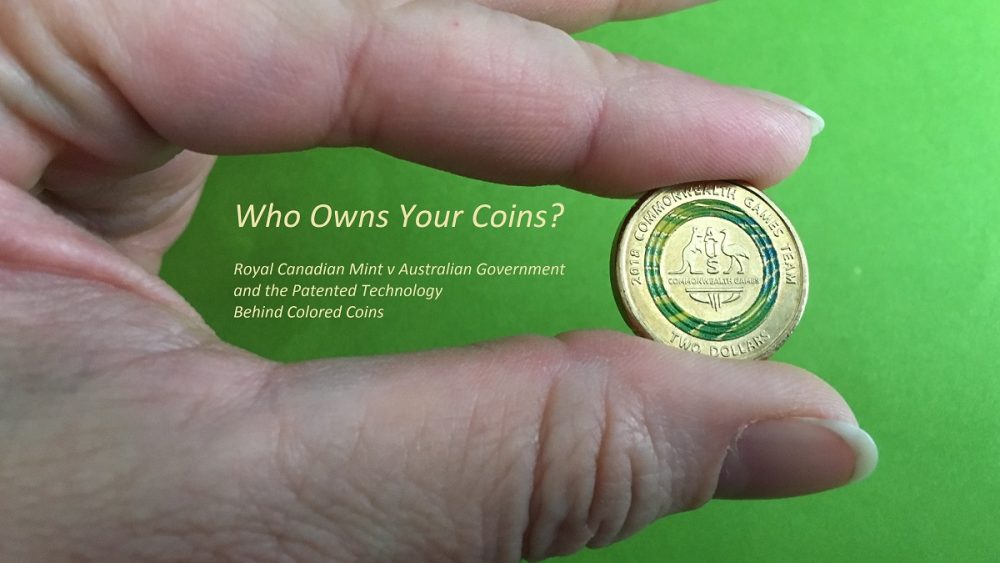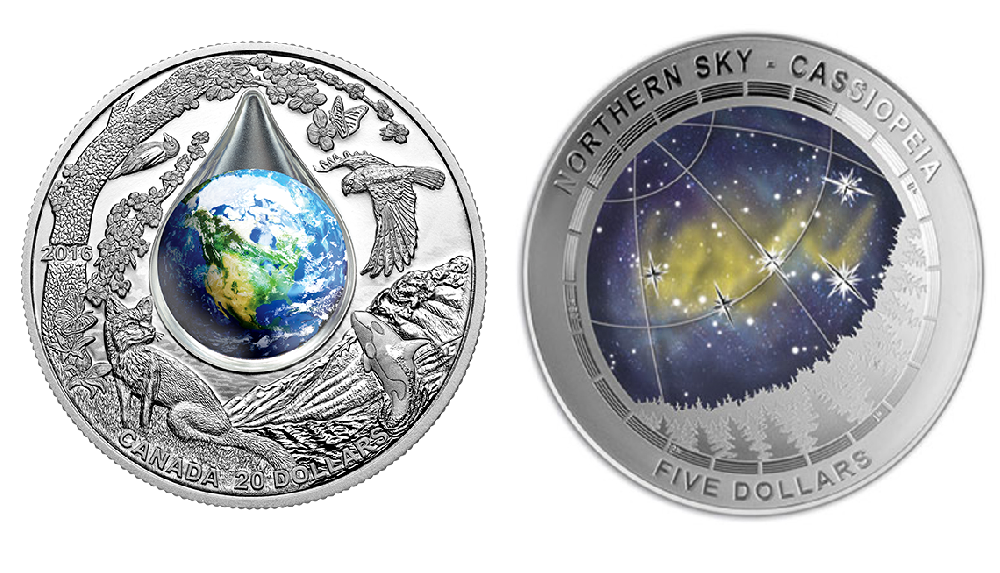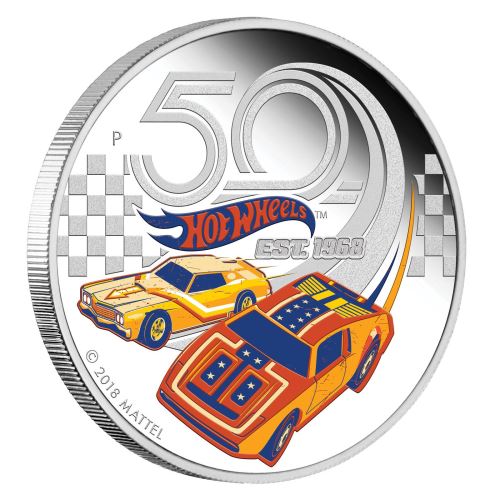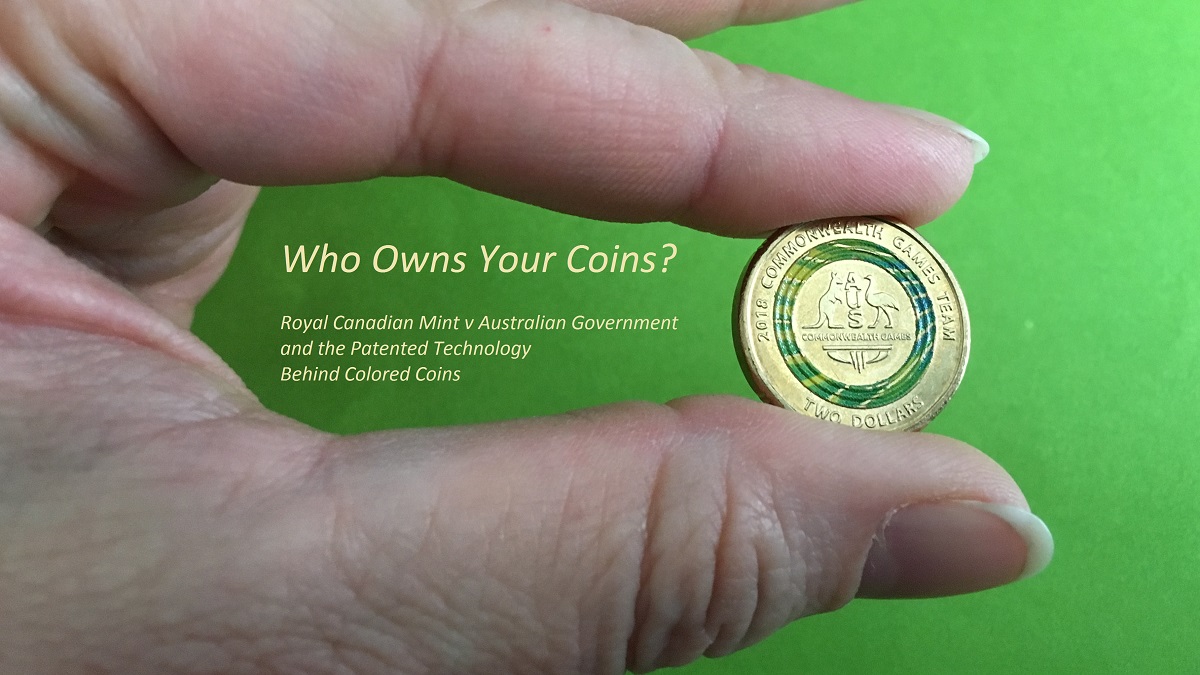
As you read this, two of the nicest nations of the world are in a fierce legal battle about … coins. Okay, ‘fierce’ might be a slight exaggeration. Especially since we are talking about Canada and Australia. But the legal scenario is real. The Royal Canadian Mint is suing its Australian counterpart regarding the unique process of painting color onto metal.
What Are Colored Coins?
Colored coins are a relatively new thing, created primarily for the purpose of commemorating special events. The official term for these is “mint-colored coin”; this does not mean a coin with a light-green hue. To be a “mint-colored coin” it must satisfy the following:
- It must be a coin, as in legal tender within the nation of issue;
- The nation must be recognized as a sovereign state and international body;
- The color must be applied at the mint where it was made or by another entity authorized by the government of the issuing nation.
The world’s first mint-colored coins were both produced in 1993 by Uganda and Equatorial Guinea. The coins for both nations were produced by the same mint in South Africa and each commemorated a different series: Uganda commemorated Famous Places, and Equatorial Guinea celebrated a dinosaur series.
In 2004, the Royal Canadian Mint issued the first mint-colored circulation coin. These coins differed from the Uganda and Equatorial Guinea coins because they were produced with the sole purpose of general public circulation. While the 1993 coin sets are legal tender in their respective nations, the dinosaur series and the Famous Places series were both intended as commemorative only. Canada’s 50-cent Red Poppy coin was designed to commemorate Remembrance Day; however, it was also intended to be available to the entire Canadian nation.
Since 2004, many more nations have produced mint-colored coins for various occasions. In the 2018 Krause Publications Coin of the Year Awards (THE Coin Awards), Australia was awarded the Best Silver Coin for its five-dollar coin featuring a painted picture of the night sky, while Canada was awarded the Most Inspirational Coin for its $20 Silver Coin featuring a painted 3D droplet containing Mother Earth.

To date, the United States Mint does not produce colored coins. On its official website, the US Mint states it “does not encourage or support products that alter the fundamental images on its coins.” To be totally honest, the US is missing out on a whole heap of pretty with their coins. Even your official statement sounds… plain silver.
What Does the Royal Canadian Mint Want With the Australian Coins?
In 2012, the Royal Australian Mint produced 500,000 commemorative $2 coins featuring a “painted” red poppy in the center. It looked really similar to the famous Red Poppy design from Canada in 2004, so Canada had a chat with Australia. After a few casual chats and “conversations within the Commonwealth,” Canada still felt frustrated with the situation. Apparently, the Canadians first officially contacted the Australians in 2015 to notify them of a patent on printing technology.
Since then, the Canadians have noted many more mint-colored coins produced by the Royal Australian Mint–including the Possum Magic series launched in August 2017. It would seem like this latest coin series was the last straw; within months, the Royal Canadian Mint had filed documents in the Australian Federal Court against the Australian Government for infringement of their patent technology. The Canadians seek remedies, including the destruction of any questionable coins, restraining the Australian mint from further infringements, and the surrender of all profits from the infringement. That’s a lot of money, no matter which way you look at it.
Who Owns Your Coins?
If the Canadians win their case, any confiscation or destruction of coins relates exclusively to coins still in possession of the Royal Australian Mint. Any Australian mint-colored coins in your possession will not be affected. Alex Reeves (Royal Canadian Mint) was able to provide some clarification (from the Canadian side of things):
Before coins are placed in circulation, they are the property of the Government of Canada, as the Royal Canadian Mint is a manufacturer and supplier to the government. We also manage the distribution of circulation coins across Canada. Through this distribution process, coins are sold to financial institutions and armored car companies who deliver them to their customers (businesses) to carry out cash transactions.
A coin is simply a token of currency or exchange for the agreed amount between you and the person you are exchanging with; be it a merchant, a customer, a bank, or your 11-year-old son who is negotiating a better rate for his chores. Originally they were officially weighed amounts of gold or silver, in order to accurately assign an agreed value to them. They are no different from seashells, heads of cows, or Pokemon cards.
The value of a legal tender coin is set by a nation’s government and enforced by the mint and banks but essentially it is a physical representation of the “credits” or numbers you have. Once the coins are bought by the bank, the bank then “sells” the coins to you as an equivalent representation of the credit in your bank account. So if you have $50 in the bank and you ask the bank for $50 worth of $2 coins, then the bank gives you the coins and deducts the amount from your account credit. This works the same for merchants who need coins for business, like floats.
Once the coins are released into circulation, they are considered to be in the hands of the general public. There are no recall or recovery policies in place. If your coins are damaged or unfit for circulation, you should take your coins to the bank and ask to exchange them for equivalent currency. Some mints have a policy for recovering damaged coins directly from the banks; however, this information is not available to the public.
How Do We Make Mint-Colored Coins?
With all this talk about the patented technology and the exact process of making coins look a little more special, it’s hard for some people to understand the process itself. And no, it does not involve a Creative Arts graduate painstakingly coloring each and every coin.
The legal case between the Canadian and Australian mints is an active and ongoing case, so exact details of the coloring process for either mint are not readily available. However, there are other mints who can share their process and give you an idea as to how the magic happens.
For example, the Perth Mint (Australia) is a privately owned precious metals enterprise, providing premium gold, silver, and platinum products and services to markets all around the world. They have produced limited commemorative coins for special occasions that are not legal tender in Australia but are available for private collections. I especially like the Hot Wheels 50th Anniversary coin released this year.

The Perth Mint created this video in 2014 to show how they created and colored a 5-ounce silver coin:
The Perth Mint uses a specially adapted pad-printing technique with four printing plates, each etched with different elements of the coin design. Using four base colors (cyan, magenta, yellow, and black), the ink is applied to the etched surfaces. Silicone pads are lowered on to the etched surfaces to absorb the ink pattern and then carefully transfer the same ink pattern to the face of the coin in successive layers. The ink is mixed with a hardener to ensure the image is left with a durable finish. Whether this is the same process used by other mints is not known, but it is still very cool to see how these details are produced!
As mentioned above, the case between the Royal Canadian Mint and the Royal Australian Mint is still active. We’ll update you when judgment is made available. In the meantime, hold on to any mint-colored coins you find. Who knows their value in the near future?




The conspiracy between The Royal Canadian Mint and its Australian Counterpart regarding the coins has shed some highlights on how capitalism is working in our country. I am shocked to know what is being revealed nowadays. Somehow your article helped me fetching some knowledge about capitalism and now I can write an essay that I was assigned by the college to write on capitalism and how it works. I also need to read Edubirdie review if I need to hire a writer from them because reviews tell a lot about the performance of the writers.